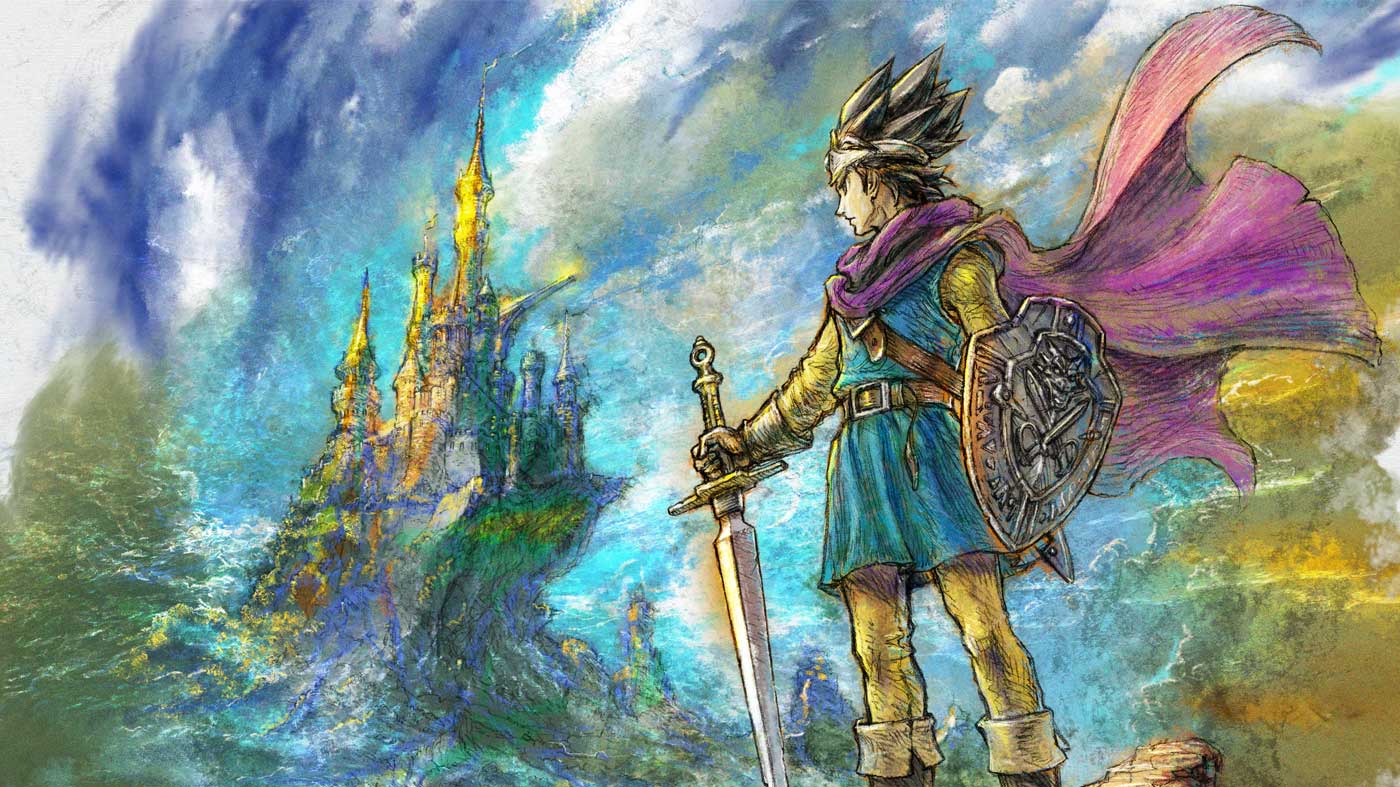Square-Enix’s 2D-HD system has been a godsend for traditionally styled Japanese RPGs. After struggling through years of questionable visual updates and smoothing filters, we finally have a visual style that feels respectful to the genre’s forebearers while looking eye-poppingly pretty on modern machines. It all began with Octopath Traveler and it’s fantastic sequel, but since then many games have employed the style, both new and old.
The latest series to get the HD-2D treatment also happens to be a massive blind spot in my personal game experience. Dragon Quest 3 2D-HD Remake, aside from being an absolute mouthful of a title, is a stellar example of how to bring an almost forty-year-old game to the current day. With a gorgeous visual overhaul, a moving orchestral soundtrack and thoughtful quality-of-life features, this 2D-HD remake respectfully allows the original source material to shine.

Our story begins with our protagonist waking up in their single-parent home. We learn that their father left on an adventure some time ago to save the world and never returned. Despite this, our character feels like having a coming-of-age moment and leaving on a similar adventure. Their poor mum must barely make it through the day because of the worry.
You learn of a big bad guy you must defeat and head to the local tavern to assemble an adventuring party to save the world. This is the first moment where you’ll see how free you are to build a party just as you like. You can recruit up to three other party members at a time. You decide their name, appearance, and, most importantly, their vocation. From warrior and priest to more oddball options like gadabout and monster wrangler, you have immense freedom in building out your party.

Here lies one of the aspects of Dragon Quest 3 that impressed me the most. Its job system is incredibly flexible, and with a little thought, it’s easy to build a wildly versatile team with which to take on the world. At a certain point in the game, you’ll get the option to change the classes of your party mates. When you do this, they go back to Level 1, but they keep all the spells and abilities they’ve learned so far, as well as half of their currently built-up stats. Building them back up to level with the rest of the party is pretty painless, and when they get there, they have stats above what they could have had at the same level without re-classing. They also gain all the new abilities of their new class as they grow.
THE CHEAPEST PRICE: $89.95 WITH FREE SHIPPING ON AMAZON
Normally multi-classing systems put me off a little, I’m afraid I’ll absolutely goose it and end up with a totally useless party member. The way it’s done here means that almost no matter what you do, you’ll end up with better stats than you started with. It made me much more willing to play with the system. In doing so, I went from a pretty standard mage, priest and warrior combo to a party with immensely useful thief and monster-wrangling skills. Each party member became more well-rounded with buffs and heals as well, so if one party member fainted, it was rarely game over. The job system in Dragon Quest 3 is great fun to play with.

The battle system is pretty straightforward and will be familiar to anyone who’s played a turn-based RPG. You’ll take turns to fight with weapons, items, magic spells and special abilities – attacking, defending and manipulating the stats of your party and your enemies to your advantage. Things can be quite difficult to begin with while you’re building out your party’s abilities but I found that if I did a little extra exploring and made judicious use of buffs and debuffs I was usually able to prevail against tough early bosses without too much trouble.
I touched on the 2D-HD overhaul earlier, but it’s worth going into a little more detail. I’m sure it will become old hat at some point, maybe verge on overuse eventually, but for now, I’m still utterly enthralled by the visual style and how it brings NES/SNES-era RPGs to life. Characters and monsters maintain a flat pixel-art look, while the environment around them is rendered in loving 3D detail. A shallow depth of field sells the look even further – it’s like looking into a diorama of little miniatures going about their adventure.

Similarly, the audio has had a respectful revamp that maintains its classic sensibilities while taking advantage of modern hardware. The entire soundtrack is luxuriously orchestrated and feels like a realisation of what was being composed in the NES/SNES era without the shackles of the sound hardware of the time. I’ve enjoyed the soundtrack so much that I’ve gone back to listen to the originals to compare them, and you can hear the distinct flavour of the originals in the new orchestral recordings. Some sound effects have remained from the original, tastefully melding the old and new.
While great effort has been made to keep things traditional, several new quality-of-life additions have made things more palatable to a broader audience. Objective markers can point you to the next major story location to ensure you’re never aimlessly wandering, though wandering is still worthwhile to find little events and items that add flavour to your adventure.

Three difficulty levels are available to tailor your experience to your preference. Dracky stops anyone in your party ever getting below 1HP, and Draconian ramps up the difficulty while reducing EXP gained per battle. Auto-battle options aren’t entirely new to the series, but are an incredibly useful tool when grinding levels or dealing with easier fights that don’t need particular strategies. All of these features are entirely optional, and I didn’t feel they got in the way of playing the game ‘as intended’. Mostly, they just prevented me from looking up a guide when I couldn’t quite recall where to go next.




